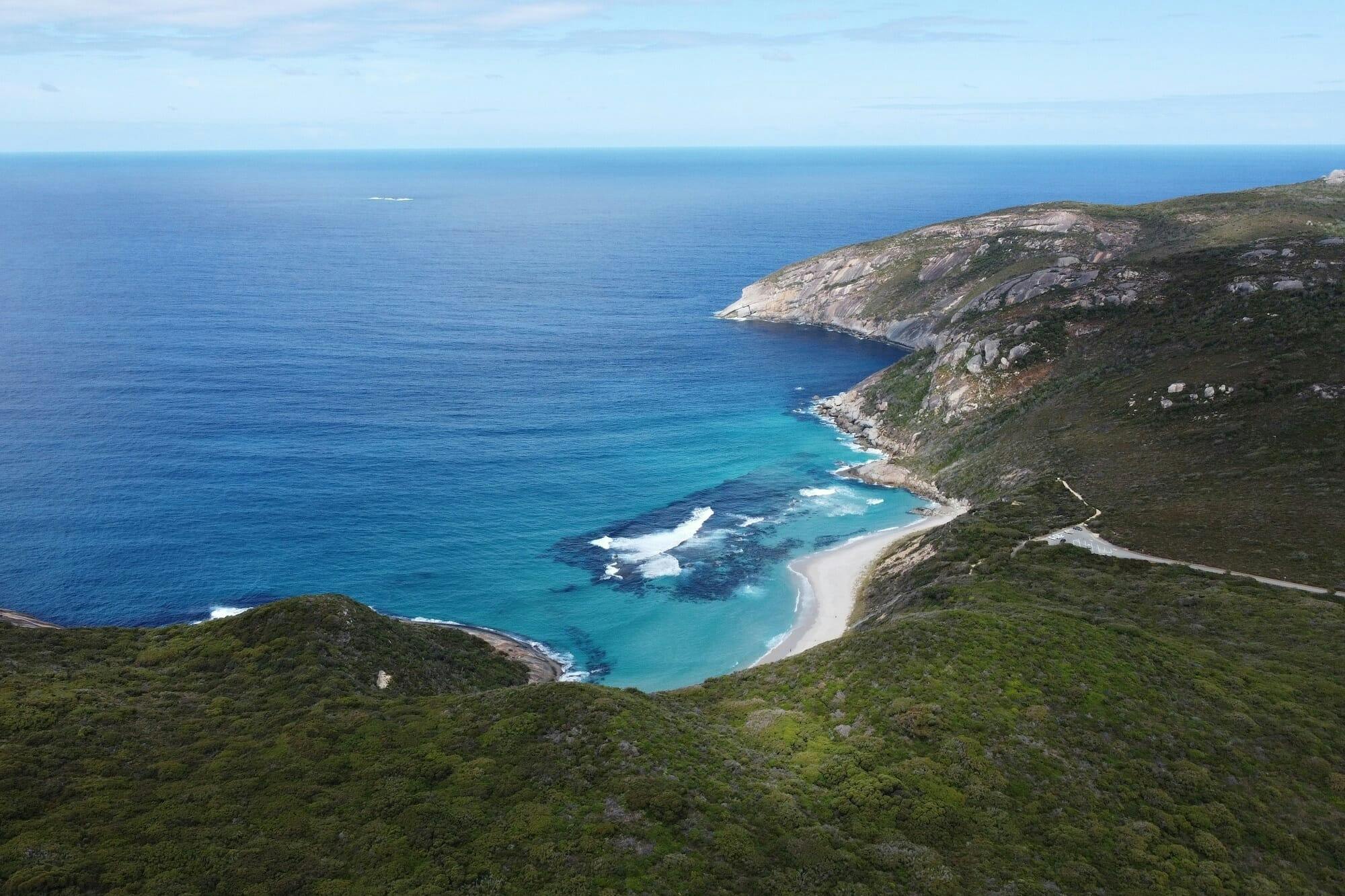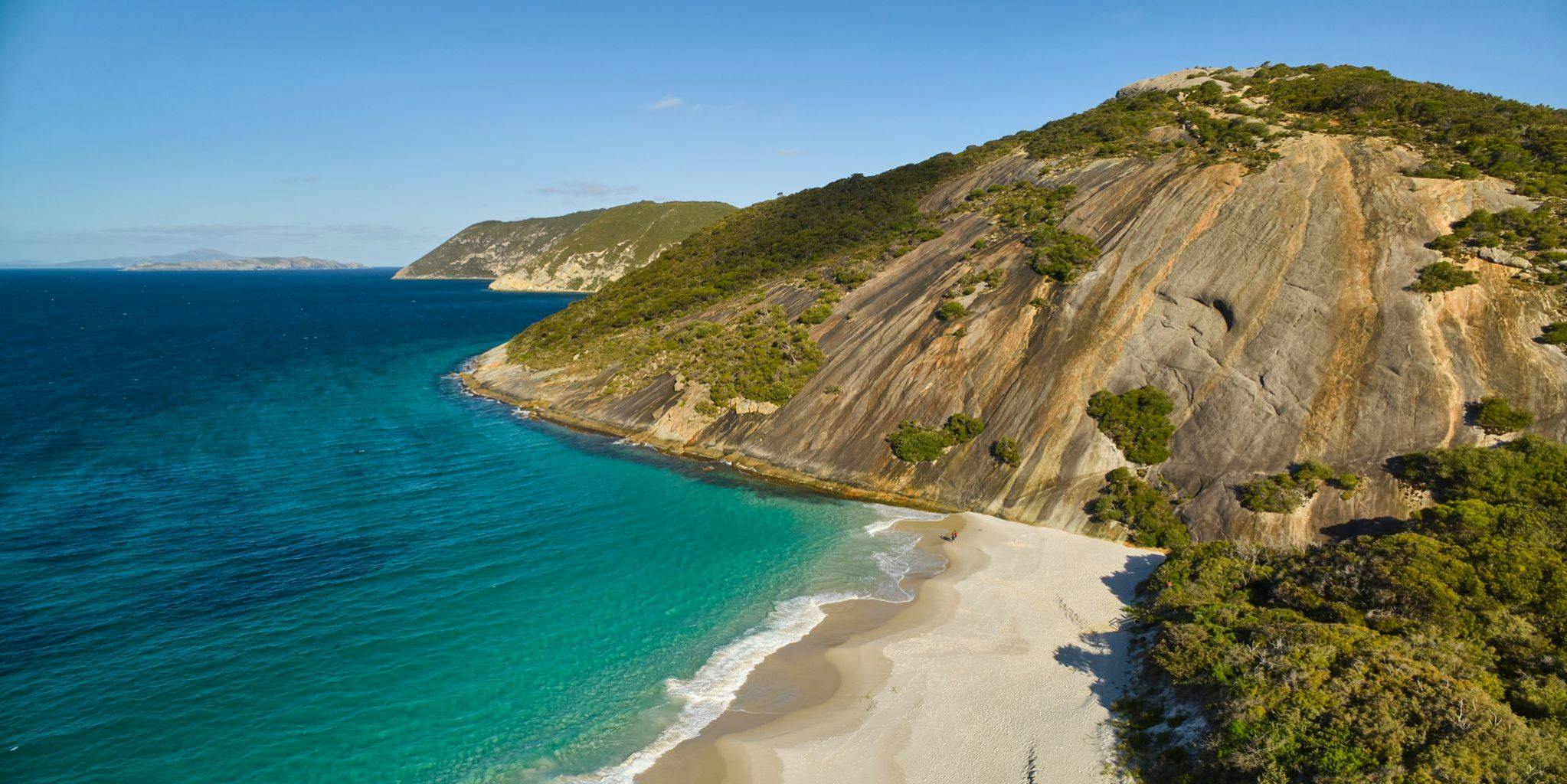Misery Beach: Everything you need to know

After being crowned Australia’s best beach, Albany’s not-so-miserable Misery Beach has had a global spotlight shone on it.
Squeaky, pristine white sand and stunning clear waters make it a no-brainer, but its intriguing history makes it worth a second look.
What is Misery Beach?
Approximately 200 metres long, Misery Beach is a secluded beach in a protected cove. Like many beaches in Albany and along the southern coast, it’s framed by dramatic granite outcrops – at the eastern end, a mammoth wall rises steeply from the ocean and connects to a stunning peninsula.
It’s posited that the beach was named because of the area’s historic whaling industry: with the whaling station less than a kilometre down the coast, offal and blood would wash onto shore and stain both the water and sands red, as well as attract sharks. Luckily, this hasn’t been a problem since the station ceased operation in 1978, and the beach has since become a favourite for locals and visitors.
For the Menang people, the beach was a prime location for spear fishing and camping, as well as for catching kangaroos.

Where is it?
About 20km south of Kinjarling/Albany, and about five hours’ drive from Perth, Misery Beach is situated on Menang Noongar boodja. Within the 3936 hectare Torndirrup National Park (in which you’ll also find the Gap and the Blowholes), the beach faces north into the picturesque Frenchman’s Bay – where you can hope to spot migrating southern right or humpback whales frolicking in the calm waters during the autumn months.
What to do:
Go for a dip! The beach is sheltered on both ends from the harsh Albany winds, making it the perfect spot to spend the day floating and splashing, as well as snorkelling. Look out for dolphins and seals, who also like to frolic in the protected waters.
Because it’s generally so calm, it’s also a great spot for kayaking and stand up paddle boarding.
Subscribe to our free newsletter!
While you’re in the area, we highly recommend learning a bit about the First Nations history and culture of the area, with local businesses like Kurrah Mia offering a range of immersive tours for all abilities.
There’s also heaps to do in Albany in general, from amazing restaurants to whale watching and stunning trails.
What not to do:
The beach isn’t patrolled by any lifeguards, so make sure to swim within your abilities! While there’s a nearby carpark only a few minutes’ walk from the beach, bear in mind that the trail is unsealed and has numerous steps.
As with all visits to our natural spaces, adhere to the Leave No Trace Principles: meaning don’t disturb any wildlife, don’t leave any rubbish out there, don’t pick wildflowers and try your best to look after the surrounding area. Make sure you also adhere to any fire restrictions or bans that might be in place.
Image Credit: Shutterstock / Australia’s South West